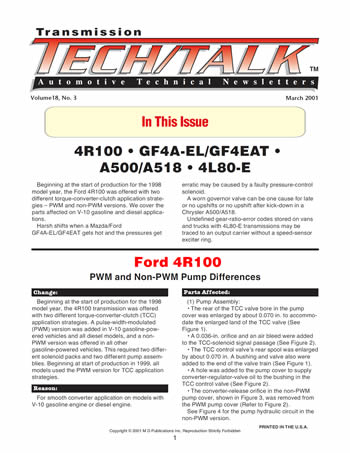

Issue Summary:
- Beginning at the start of production for the 1998 model year, the Ford 4R100 was offered with two different torque-converter-clutch application strategies – PWM and non-PWM versions. We cover the parts affected on V-10 gasoline and diesel applications.
- Harsh shifts when a Mazda/Ford GF4A-EL/GF4EAT gets hot and the pressures get erratic may be caused by a faulty pressure-control solenoid.
- A worn governor valve can be one cause for late or no upshifts or no upshift after kick-down in a Chrysler A500/A518.
- Undefined gear-ratio-error codes stored on vans and trucks with 4L80-E transmissions may be traced to an output carrier without a speed-sensor exciter ring.


Beginning at the start of production for the 1998 model year, the 4R100 transmission was offered with two different torque-converter-clutch (TCC) application strategies. A pulse-width-modulated(PWM) version was added in V-10 gasoline-powered vehicles and all diesel models, and a non-PWM version was offered in all other gasoline-powered vehicles. This required two different solenoid packs and two different pump assemblies. Beginning at start of production in 1999, all models used the PWM version for TCC application strategies.

For smooth converter application on models with V-10 gasoline engine or diesel engine.

(1) Pump Assembly:
- The rear of the TCC valve bore in the pump cover was enlarged by about 0.070 in. to accommodate the enlarged land of the TCC valve (See Figure 1).
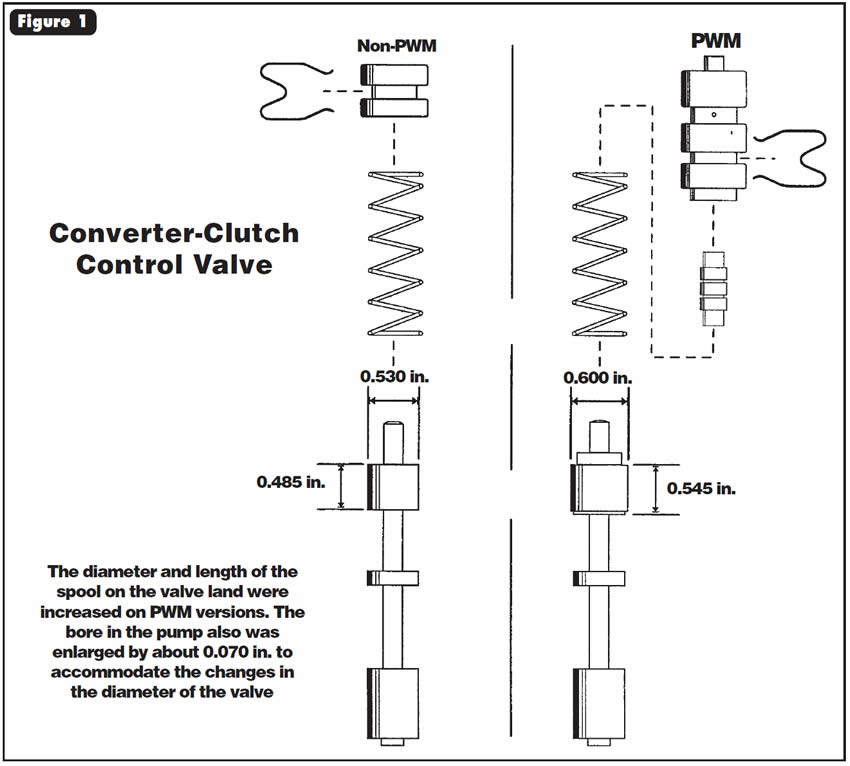
- A 0.036-in. orifice and an air bleed were added to the TCC-solenoid signal passage (See Figure 2).
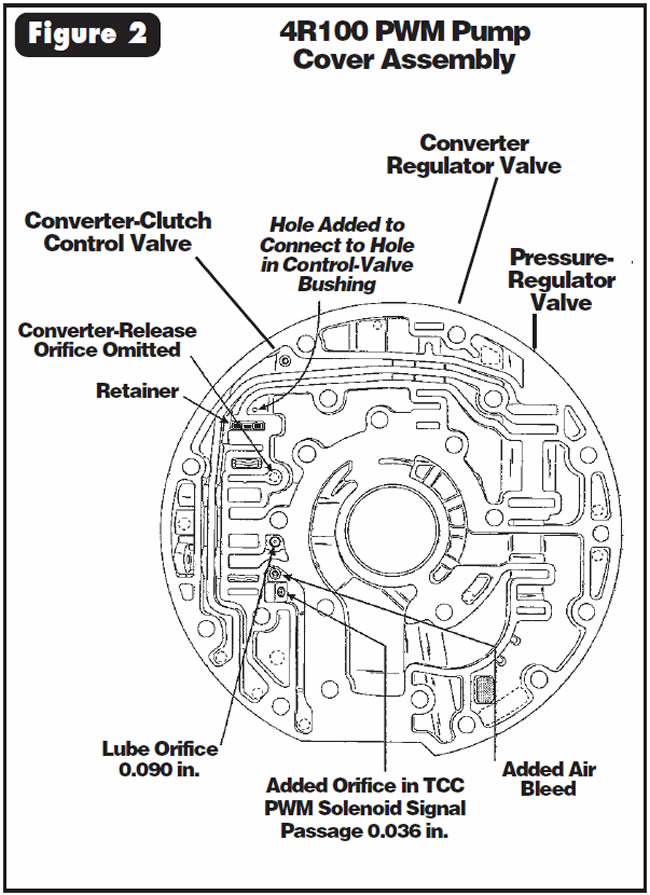
- The TCC control valve’s rear spool was enlarged by about 0.070 in. A bushing and valve also were added to the end of the valve train (See Figure 1).
- A hole was added to the pump cover to supply converter-regulator-valve oil to the bushing in the TCC control valve (See Figure 2).
- The converter-release orifice in the non-PWM pump cover, shown in Figure 3, was removed from the PWM pump cover (Refer to Figure 2).
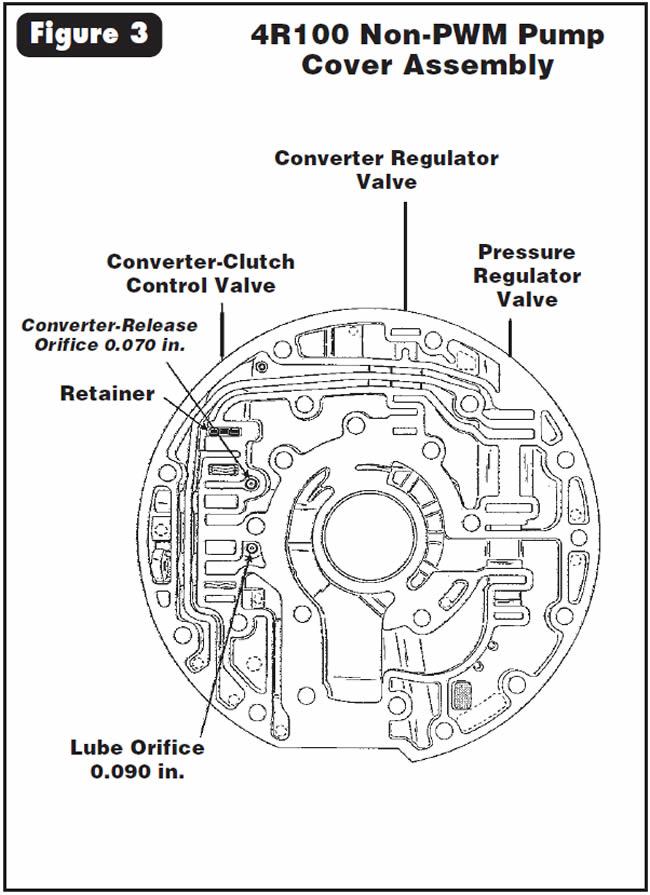
See Figure 4 for the pump hydraulic circuit in the non-PWM version.
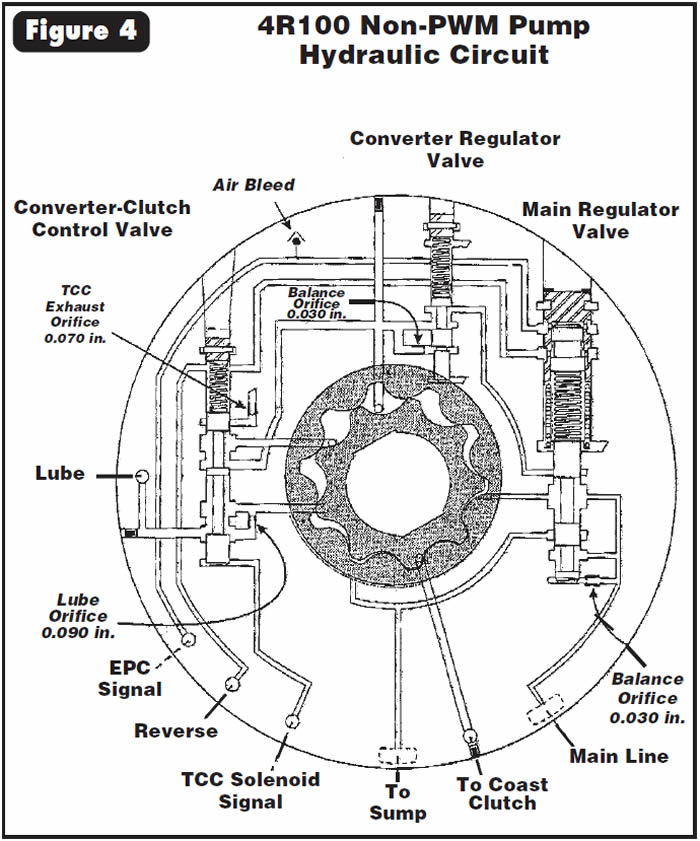
Figure 5 shows the changes to the pump hydraulic circuit in the PWM version.
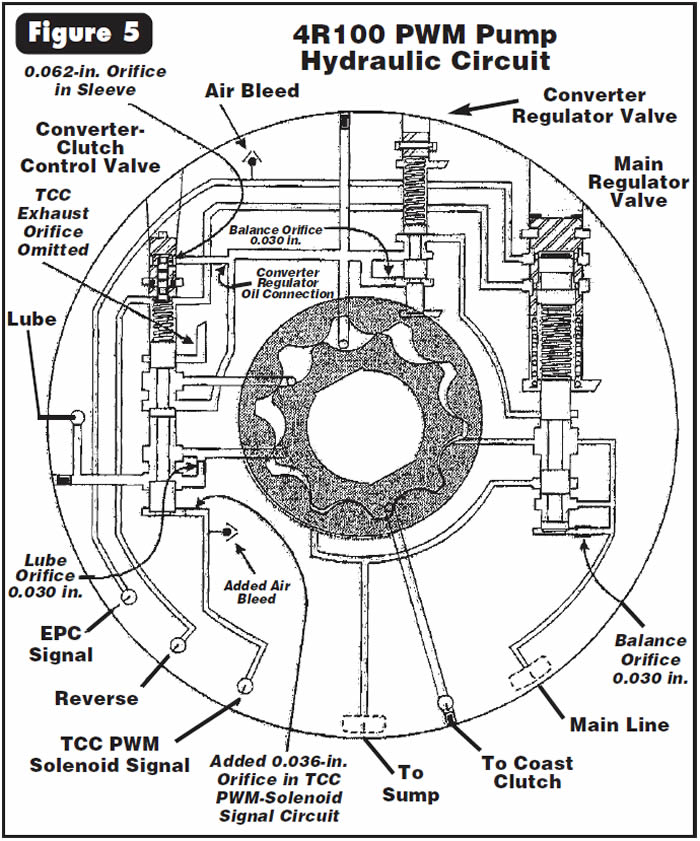
(2) Solenoid Pack:
- The PWM solenoid pack requires a pulse-width-modulated TCC solenoid, and the non-PWM solenoid pack requires an on/off TCC solenoid. See Figure 6 to identify the differences between the two solenoid packs.
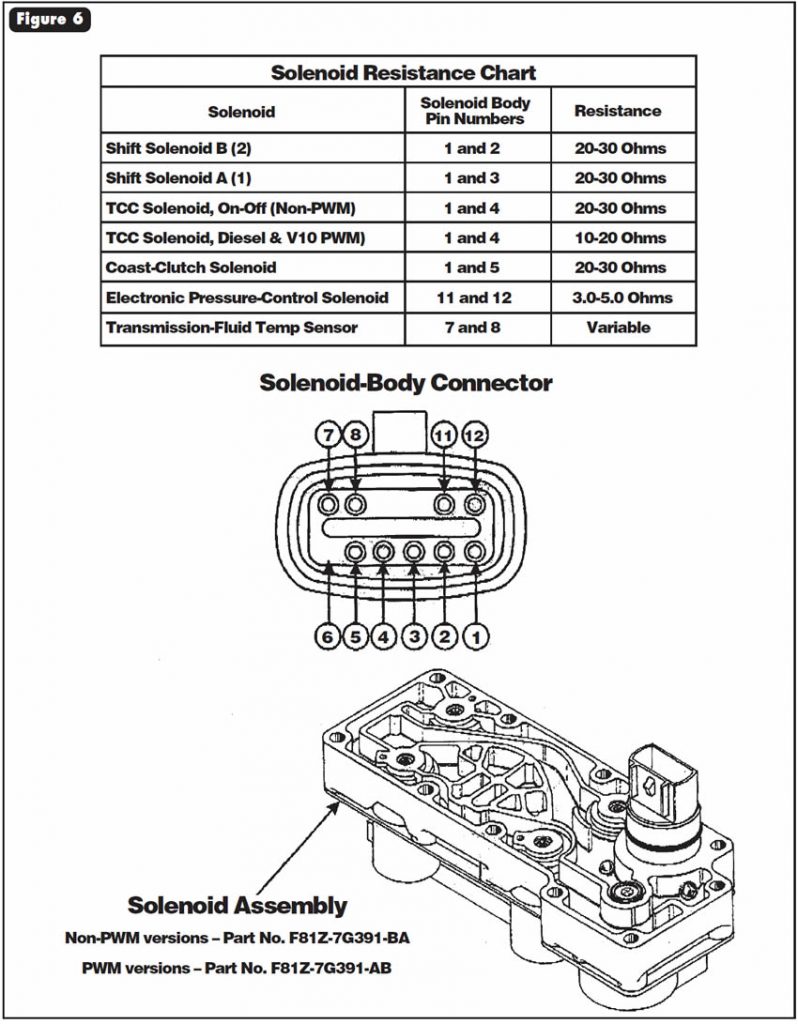

None of the parts listed is interchangeable from model to model.

- Non-PWM Pump Assy. (with cast-iron coast-clutch drum) ………………………….F81Z-7A103-AA
- Non-PWM Pump Assy. (with stamped-steel coast-clutch drum) …………………..F81Z-7A103-BA
- PWM Pump Assy. (with stamped-steel coast-clutch drum)……………………………….F81Z-7A103-CA
- Non-PWM Solenoid Pack………………F81Z-7G391-BA
- PWM Solenoid Pack………………………………F81Z-7G391-AB




Before or after overhaul, 1993 and later vehicles equipped with GF4A-EL transaxles may exhibit harsh 1-2 or other upshifts when hot. Line pressure appears to be normal or slightly higher than normal, 60-70 psi at idle and 161-172 psi at stall, when checked in the D range when the vehicle is cold. However, when the transaxle is hot the pressures get erratic and exceed the stall-pressure specs, which are 175 psi in D and 300 psi in Reverse.

The cause may be a faulty pressure-control solenoid, a worn boost valve and sleeve and/or a worn pressure-regulator-valve bore, which is part of the rear control-valve body.

Replace the pressure-control solenoid, shown in Figure 7, with Ford part number F32Z-7G136-AA or Mazda part number FU9A-21-1G1A.
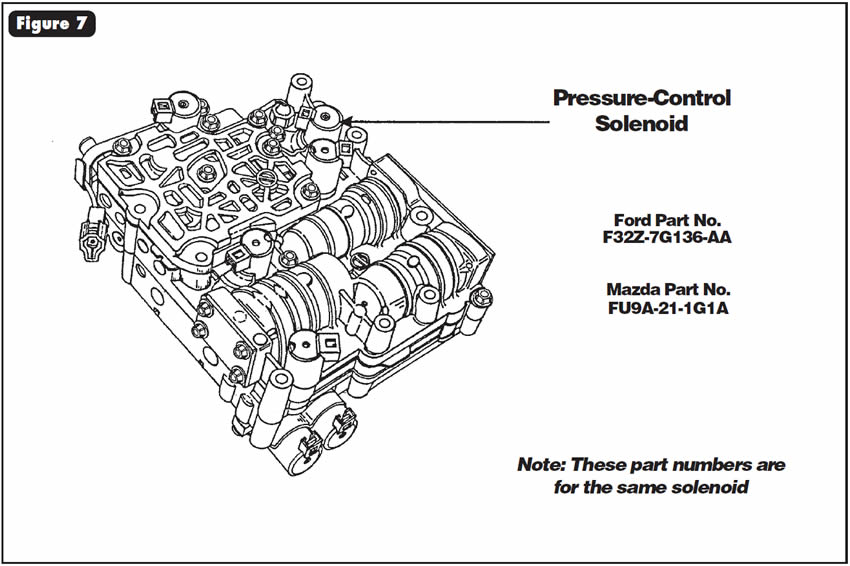
Inspect the pressure-regulator valve and its bore for wear or scoring (Refer to Figure 8). If the bore has shiny spots where the valve rides, install a new rear control-valve body, which is available from Mazda. Inspect the boost valve and boost-valve sleeve for wear or scoring, and replace as needed with Sonnax boost valve and sleeve (See Figure 8).
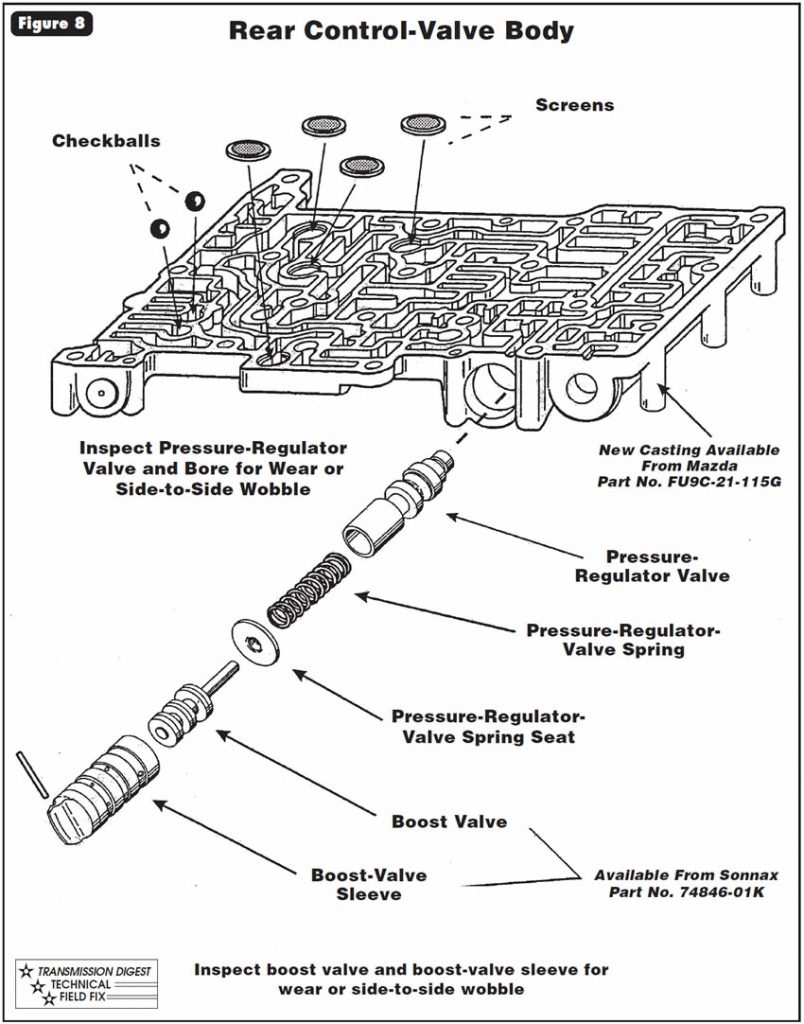

- Pressure-Control Solenoid (Ford Part No.) ………..F32Z-7G136-AA
- Pressure-Control Solenoid (Mazda Part No.) ……….FU9A-21-1G1A
- Rear Control-Valve Body (Mazda Part No.)…………FU9C-21-115G
- (Note: This is a new casting with no valves in it.)
- Boost Valve and Sleeve (Sonnax Part No.)………….74846-01K




Any vehicle equipped with an A500/518 transmission may exhibit a complaint of late or no upshifts, or no upshift after passing gear.

One cause may be a worn governor valve in the governor assembly, preventing governor pressure from increasing properly. See Figure 9 for identification of the governor valve.
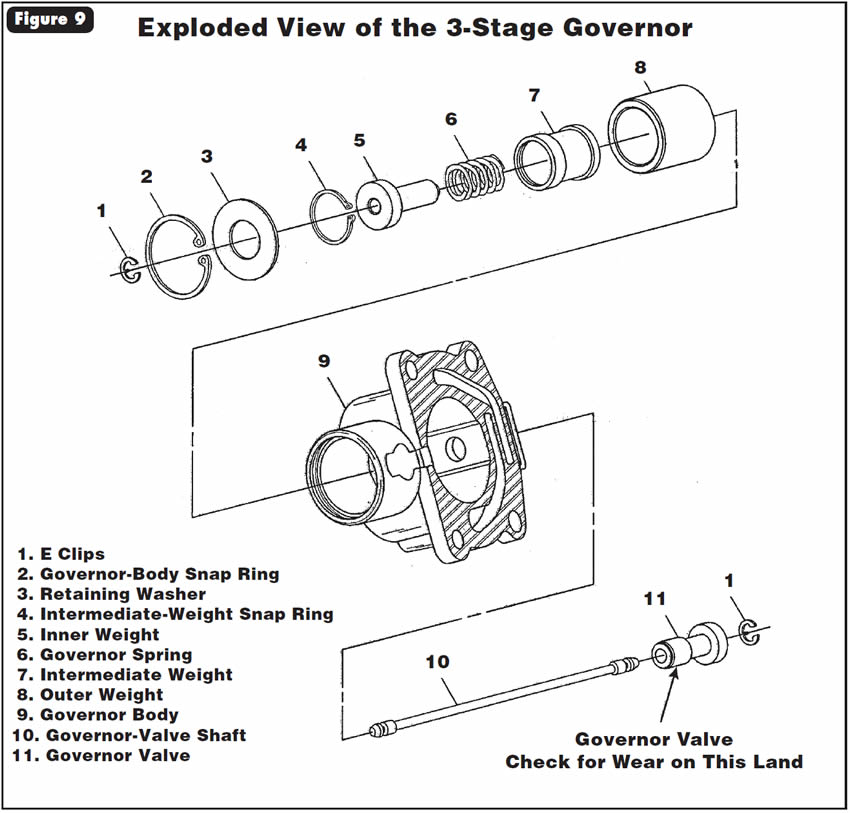

Replace the governor valve (See Figure 9).

Governor Valve…………………………………..4617064




Line pressure is at maximum, and code 85, P0730 or P1871 for an undefined gear-ratio error is stored. When you view the data list on the scan tool, the first-gear ratio parameter indicates zero, and the second-gear ratio parameter indicates 2.48, which is a first-gear ratio. In third gear, the scan tool indicates a 1.09 gear ratio, which is higher than it should be, and input and output speeds were NOT the same. The fourth-gear ratio parameter indicated 0.78, which is higher than it should be. Refer to the chart in Figure 10 for the correct gear ratio in each gear.


An output carrier without a speed-sensor exciter ring was installed in a transmission intended for a vehicle that requires one. However, the output-shaft speed sensor is close enough to the output-carrier park lugs to create a signal sufficient to cause the erratic gear-ratio indications (See Figure 11).
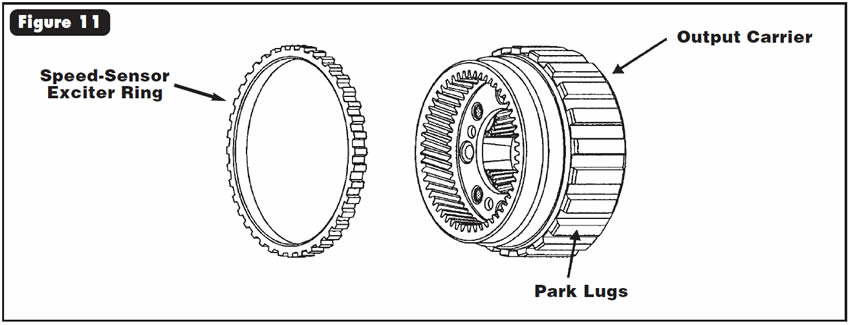

If the vehicle system being serviced requires a functional output-shaft speed sensor, be sure to install an output carrier that has a speed-sensor exciter ring when output-carrier replacement is necessary.

With the start of production for the 1994 model year, the output-shaft speed sensor on all K (4×4) trucks was eliminated. As a result of this action, the speed-sensor exciter ring on the output carrier also was eliminated.
1993 and earlier K and V models and all two-wheel-drive applications require a functional output-shaft speed sensor and therefore also require an output carrier with a speed-sensor exciter ring.


March 2001 Issue
Volume18, No. 3
- Ford 4R100: PWM and Non-PWM Pump Differences
- Mazda/Ford GF4A-EL/GF4EAT: Harsh Upshifts
- Chrysler A500/A518: Late or No Upshifts, or No Upshift After Kick-down
- GM Trucks and Vans With 4L80-E Transmission: Gear-Ratio Error

